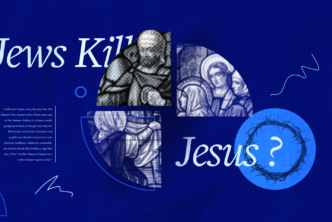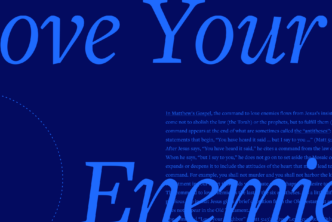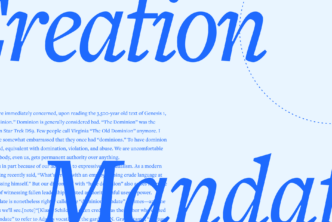A Priori is a series in which we put three simple questions to scholars undertaking important research in biblical studies, theology, ethics, and more. We seek out the authors whose mission is the church, whose vocation is research. This week we hear from Jerod Gilcher and his work on the macrostructure of the Psalter.
1. Who are you, where did you study, and what work have you published so far?
My name is Jerod Gilcher and I am a PhD student in Dissertation phase at Gateway Seminary in Ontario, CA. Aside from being a regular contributor for The Master’s Seminary blog, as well as a forthcoming book review for SBL, I have yet to publish but hope to in the near future.
2. What research/writing project are you currently working on that you are most excited about? Have you presented papers related to this topic, and can you give us a little taster from your writing?
Currently I am crafting a Dissertation on the Macrostructure of the Psalter, and particularly, on Book II’s contribution to the storyline of the Psalter. I am persuaded that the Psalms are not randomly placed, but are, in fact, intentionally arranged thematically and theologically in a deliberate shape and architecture, resulting in a kind of plot and storyline.
Gerald Wilson, who helped reignite investigation into the canonical shape of the Psalter, said that “there is evidence within the [Psalter]…of an editorial movement to bind the whole together.”1 That plot, storyline, and editorial movement binding the Psalms together functions as a kind of impressionistic painting in which one can clearly discern throughout the Psalter unifying kingdom (and I would argue, Messianic) motifs.
One of the challenges with this approach (known as editorial or canonical criticism) is not the lack of evidence within the Psalms themselves, but the prevailing form-critical approach pioneered by Hermann Gunkel (1862-1932). This approach understands the Psalms primarily in terms of their genre or form, and thus tends to view the Psalms predominantly as a collection of randomly placed Hymns, Enthronement songs, Communal Complaint Songs, Royal Psalms, Individual Complaint Songs, and Individual Thanksgiving Songs, etc.
For instance, Gunkel argued: “Daß die Anordnung der Psalmen nicht aus einem sachlichen Einteilungsgrunde erfolgt ist, ist leicht enzusehen. Nach den einzelnen Gattungen sind sie jedenfalls nicht zusammengestellt worden…Auch nach den in den Überschriften genannten Verfassernamen is das Ganze nicht geordnent worden…Da einfache klare Gründe für die Anordnung der Psalmen nicht nachzuweisen sind…” (“That the sequence of the Psalms does not follow a matching arrangement is easy to realize. It has also not, in any way, been compiled according to the individual genres. It has also not been organized according to the titles named by author…therefore the simple clear rationale for the sequence of the Psalms has not been proven.”).
Since Wilson, however, there has an upsurge of scholars who believe that the final form of the Psalter has an intentional macrostructure that “has been shaped by the work of editors in order to emphasize the importance of certain theological themes”.2
This implies then, that the Psalter itself has its own canonical shape and thus provides its own interpretive plot and framework by which individual Psalms within it are to be understood. And although not a unique claim, my Dissertation will demonstrate that the organizational patterns within the Psalter indicate a keen interest in Eschatology – or more precisely, in an eschatological King.
What I will propose in my Dissertation is that what Book II contributes to this eschatological storyline is a literary pilgrimage to the Davidic kingdom as a means to sustaining the exilic soul waiting for the arrival King. In other words, Book II provides a mosaic of linguistic, thematic and theological links between individual Psalms that, taken together, portray a literary pilgrimage to the Messianic kingdom.
One can observe within Book II what Süssenbach calls the Spannungsbogen, or, “arc of suspense”,3 in which the reader begins in exile, removed from God and surrounded by enemies (cf. 42-44), only to be transported to the “city of God” (46:4) in which God Himself dwells in His palace (cf. 46:5; 48:9-14) and from which He rules the nations (cf. 47:1-3).
I will argue that this same suspenseful, literary journey from danger and distance to the kingdom is seen again in the collections of 50–68 and once again in Psalms 69–72, each of which culminate in the global reign of the King and his worship by the nations.
3. Which readers is the final product intended for, and when do you anticipate we might see the fruit of your research in published form?
The Dissertation will, of course, be immediately intended for the academic community and I’m hoping to have completed the project some time in late 2021. Like all aspiring pastor-scholars, however, I hope to do a future version of this for the church at the popular level, so that the church may also be nourished by the Psalms in a way few have ever experienced them.
Promote your research. Send an email to tavis.bohlinger@faithlife.com answering the three questions above. Contributions are published in the order they are received. We look forward to highlighting your forthcoming work!
- Gerald Henry Wilson, The Editing of the Hebrew Psalter, Dissertation Series / Society of Biblical Literature: No. 76 (Chico: Scholars Press, 1985), 4.
- Jamie A. Grant, The King as Exemplar: The Function of Deuteronomy’s Kingship Law in the Shaping of the Book of Psalms, Society of Biblical Literature Academia Biblica (Atlanta: Society of Biblical Literature, 2004), 13.
- Claudia Süssenbach, Der Elohistische Psalter: Untersuchungen Zu Komposition Und Theologie von Ps 42-83, FAT2.7 (Tübingen: Mohr Siebeck, 2004).




